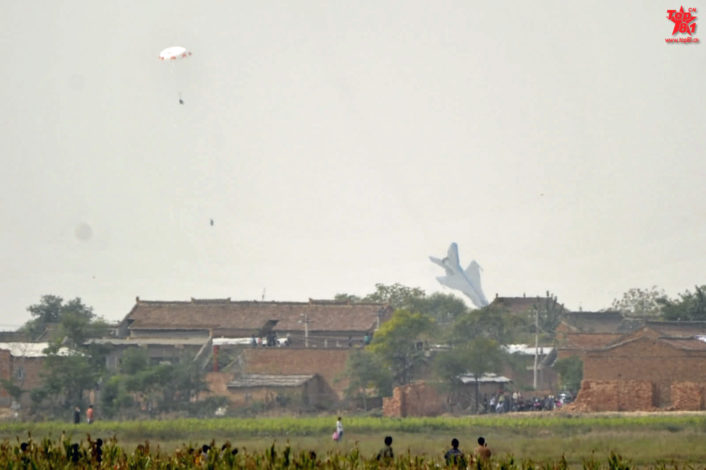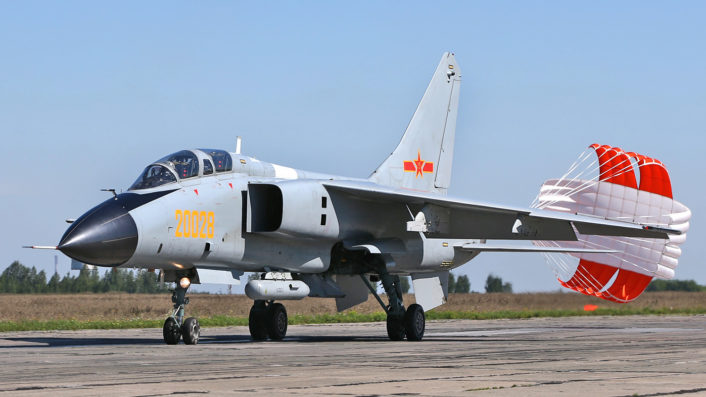Second JH-7 Crash Caught on Video in China.
Frightening surveillance video of a Chinese Xi’an JH-7 “Flying Leopard” (NATO reporting name Flounder) two-seat, twin-engine attack aircraft crashing vertically into the ground in Ledong county in the southern island province of Hainan has surfaced. Initial, unconfirmed reports in Russian social media suggested the crew of two managed to eject but conflicting reports in the credible South China Morning Post and in Syrian media say the two crew members did not eject or survive the crash.
The relatively new pro-Syrian news outlet Muraselon.com reported that, “According to the Chinese defense ministry, the accident happened on March 12, 2019 during a training [flight] in Hainan province, adding that there were no casualties on the ground, and that the cause of the accident was under investigation.” The information displayed in the top of the surveillance camera footage says the video was taken on May 18, 2019 at 7:17 AM. Shadows on the ground in the video seem to verify the time of the day of the video. It is common for news reports of Chinese military accidents from outside media to include conflicting information and inaccuracies.
The apparent lack of flight control inputs in the split second prior to impact raise questions about this crash of the Chinese JH-7. The most commonly referenced and publicly known previous accident occurred on Oct. 14, 2011. Video of the crash also show what appears to be a JH-7 entering a low altitude, downward flight attitude but both crewmembers ejected. This 2011 accident happened at the Xi’an Airshow in the Pucheng county of China’s Shaanxi Province according to video posted to YouTube.

Between 1988 and 1992 the Xi’an JH-7 is reported to have suffered several developmental flight problems. A Chinese media archive that has since been removed from the internet but is still referenced on the Wikipedia page for the JH-7 lists a number of early accidents.
The JH-7 is predominantly a ground attack aircraft and could be considered roughly a generation 4 or 4+ aircraft in its later versions as compared to international peer aircraft like France’s Mirage 2000 or, depending on its performance, early versions of the U.S. F-15E Strike Eagle and the Russian Sukhoi Su-34. Later versions of the Chinese Xi’an JH-7 “Flying Leopard” are reported to have all-weather attack capability and provisions for night vision goggle use by flight crews. The aircraft has also been structurally upgraded since its development to carry large anti-ship missiles congruent with China’s mission of defending their often-disputed maritime environment.










